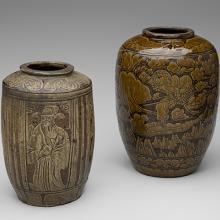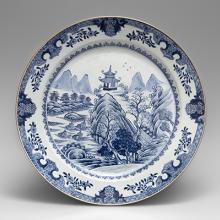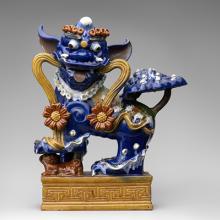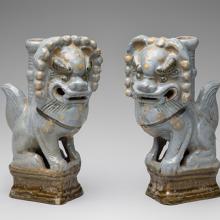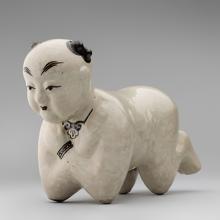Everyday Elegance in Chinese Ceramics
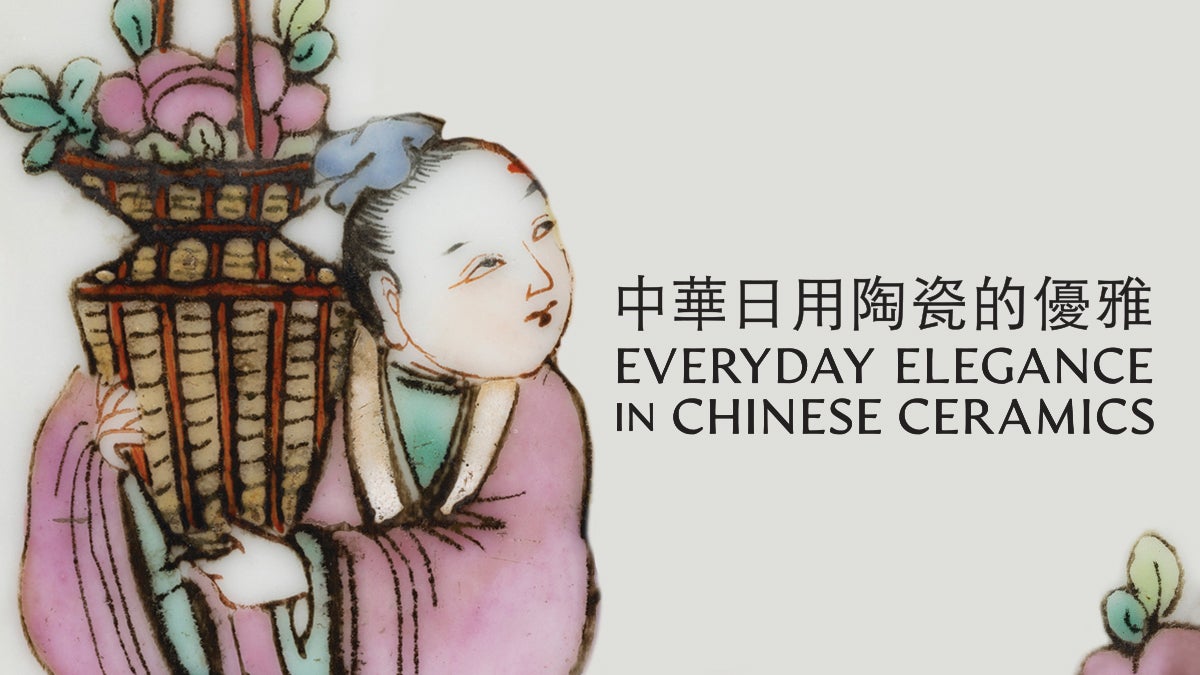
中華日用陶瓷的優雅
Everyday Elegance in Chinese Ceramics
China has fostered the world’s longest and foremost ceramic tradition in terms of diversity, artistry, output, innovation, and global impact. Its tremendous accomplishments in the field of ceramics have led many scholars and ceramic enthusiasts to focus on highly refined porcelains and imperial wares made for the ruling and elite classes. However, Chinese utilitarian ceramics, produced for popular consumption, share an artistically rich and longstanding heritage.
Items such as food storage jars, headrests, and hat stands are a few of the many finely crafted, practical forms that have evolved throughout the centuries. Wares are mold made or wheel thrown from low-fired earthenware and high-fired stoneware or porcelain. Artisans employ a variety of decorative techniques, such as incising patterns and painting onto the surface of wares with underglaze. Everyday objects are frequently embellished with a host of auspicious symbols to increase the likelihood of wish fulfillment. Rebuses or pictorial puns found on ceramics convey a variety of desires, from a harmonious marriage to the securing of rank, wealth, and longevity. Decorative motifs often take the form of flowers, birds, animals, children, or geometric designs.
Many of these durable wares, such as teapots and bowls, accompanied nineteenth- and twentieth-century Chinese emigrants to the United States in Chinatowns or railroad workers’ camps, often as the only material reminders of home. In fact, California has served as a rich depository of Shiwan ceramics from the province of Guangdong since the 1850s, when many Chinese settlers relocated from the southern region of China formerly known as Canton. Everyday Elegance in Chinese Ceramics features a variety of functional wares from the nineteenth and twentieth centuries from various regions in China. Oil lamps in the shape of animals, colorful hat stands, lively guardian lions or “foo dogs,” blue-and-white porcelain, and rustic food storage jars are some of the many captivating forms on view.
Special thank you to Sally Yu Leung and Guangzhen Zhou for making this exhibition possible, and to Dr. William Ma, Assistant Professor, College of Art & Design, Louisiana State University, for his curatorial contributions.
@SFOMuseum
#ChineseCeramics
© 2024 by San Francisco Airport Commission. All rights reserved.
